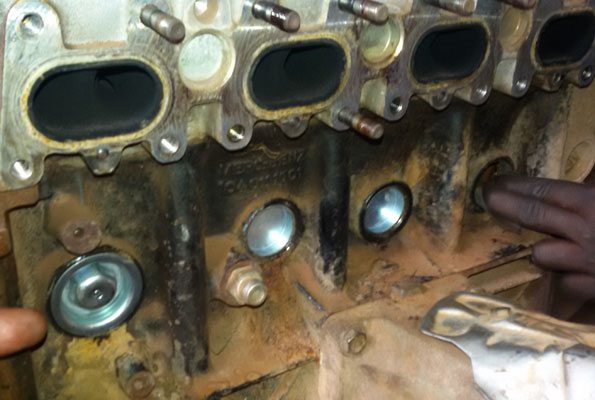

It is also possible that the radiator cap was installed incorrectly, leading to a leak as pressure builds up in the system. Older Subaru’s with higher mileage can also have the spring in the cap get stuck with debris built up in the cooling system. When the spring has failed, the cap can no longer hold the increasing pressure from the coolant as the temperature rises. Over time the internal spring can wear out. Your Subaru’s radiator is sealed using a twist-off spring-loaded cap.

The radiator cap should only be removed when a coolant system flush is being performed or in an emergency where you have to top off your coolant to get to the repair shop. The most common parts causing your Subaru to leak coolant: 1. Read on for more details on identifying these cooling system failures, keeping your Subaru’s cooling system running at its best, and what additional damage could occur if your coolant leak isn’t repaired fast enough. Parts like a new radiator cap can be replaced for as little as $25, while a head gasket replacement can run you anywhere from $1,500 to $3,000+. Some of these repairs can be quick, easy, and inexpensive, while others can be lengthy, difficult, and expensive. The most common causes of coolant leaks in Subaru’s are having a faulty or loose radiator cap, a damaged radiator, a failing water pump, degraded/damaged coolant hoses, a failed heater core, or failed head gaskets. If your Subaru keeps running low on coolant, you have a problem that needs to be fixed. The coolant in your vehicle is part of a sealed system, so you will not need to add coolant unless there is a leak. You will need to identify the problem and get your Subaru repaired promptly to prevent further damage. You might notice coolant spots on the ground where you usually park your vehicle, indicating a failure in your cooling system. To learn more: me./en_me/home/products/havoline-radiator-coolant.Most modern Subarus have a coolant level sensor that will turn on a warning light in the dashboard if the fluid level gets too low. However, remember that Havoline Radiator Coolant should not be mixed with other engine coolants since most coolant blends are based on carefully balanced mixtures of various corrosion inhibitors, and mixing of coolants with different inhibitor packages can cause loss of corrosion protection which can hamper your engine’s overall performance. It can be used in naturally aspirated and turbocharged gasoline engines in passenger cars, light-duty truck diesel engines and passenger cars, and light truck spark-ignition engines. This coolant comes highly recommended for applications where antifreeze protection is not required.

Havoline Radiator Coolant is compatible with conventional (red) antifreeze. It contains mono ethylene glycol and helps to prevent freezing and overheating while providing protection against corrosion, protecting all metals including aluminium, and preventing scale build-up. Havoline Radiator Coolant is a carboxylate corrosion inhibitor with small amount of mono ethylene glycol- added coolant for use in automotive and light-duty diesel engine applications, containing inhibitors that provide protection against corrosion when used as recommended, without any need to add water. The use of proper coolants is one of the key considerations. The result is engine failures, unexpected downtime, and maintenance and repair costs.Īt Caltex Middle East, we are committed to finding out the root cause of any problem and correcting it. However, if and when it does, you should resort to further maintenance to correct the issues.Ĭoolant leaks occur due to a number of reasons, such as corrosion, deposit formation and poor compatibility with seal materials. A coolant leak is uncommon it is not something you anticipate at any point in your equipment’s life expectancy.


 0 kommentar(er)
0 kommentar(er)
